
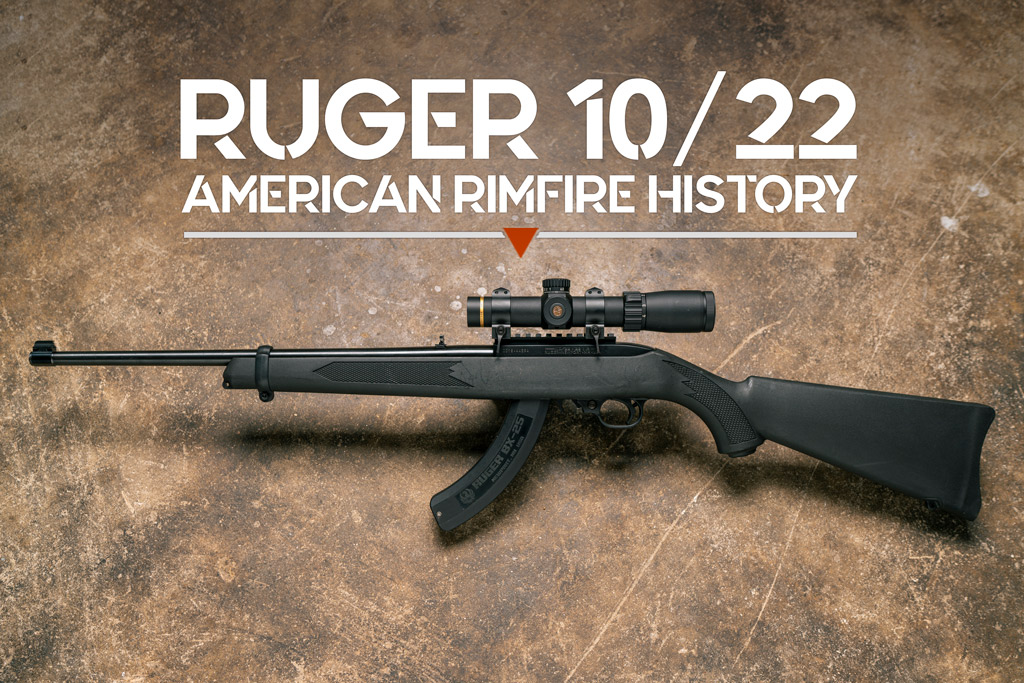
In 1964, the Ruger 10/22 arrived with a few new features, rocket-launching this rifle into the galaxy of firearm superstars. But what makes the Ruger 10/22 history so interesting? Many would argue that the secret sauce is in two fundamental principles: innovation and reliability.
The Ruger 10/22 began in 1964, with William Ruger working to design a companion to the .44 Magnum carbine. Many believe Mr. Ruger took inspiration from the World War II-famous M1 Carbine, particularly regarding the design. Still, the Ruger 10/22’s real genius comes in the V-block system, which allows easy barrel exchanges.
Sit back and hang out as we discuss the historical innovations, modern variations, and custom combinations of the iconic Ruger 10/22 semi-automatic rifle.
History of William Ruger’s 10/22 Design
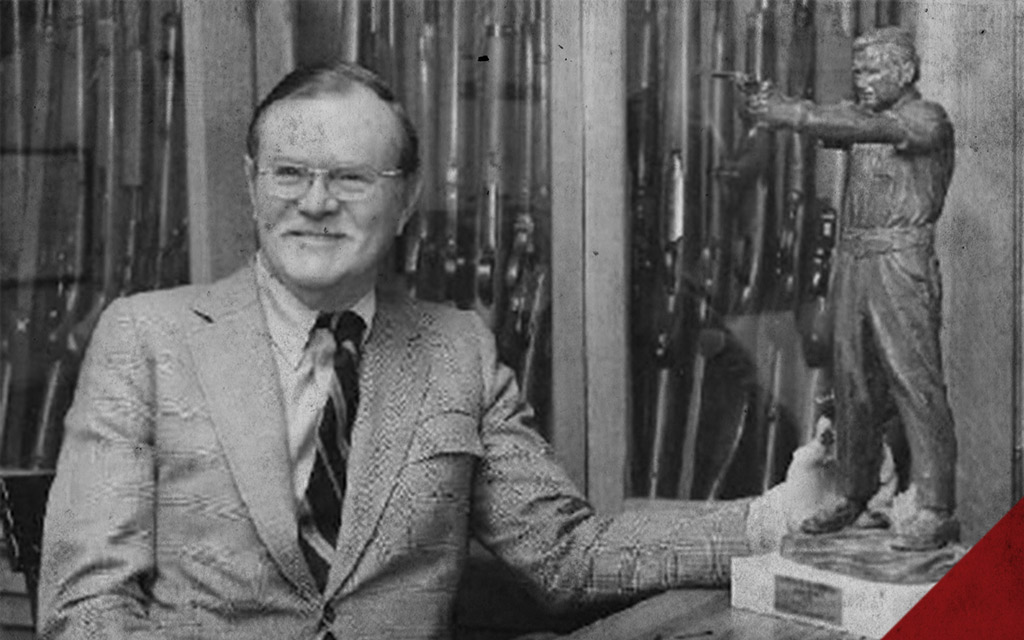
Ruger 10/22 History: William Ruger created a semi-automatic rifle that appealed to the gun-owner community.
The Ruger 10/22 started with a distinct design that gave it the legs to keep running as long as it has. What were the tenets of this design? As you’ll see, William Ruger worked to create a semi-automatic firearm that appealed to a broad customer base, offered manufacturer profitability, and gave the shooter the power of (almost limitless) versatility.
Here are three distinct aspects of the original Ruger 10/22 design:
- A 10-round internal rotary magazine
- The V-block barrel mount
- The decelerator
In the following sections, we highlight these three components.
The Ruger 10/22 Internal Rotary Magazine
The 22 LR is a rimfire cartridge with a mixed reputation regarding semi-automatic firearms. Why does the 22 LR sometimes fall into misfeeds and jams when used in semi-automatic platforms? The answer lies in the rim of the cartridge.
With many standard semi-automatic rounds, such as the 9 mm, the brass was designed so that rounds could be evenly stacked, thus reducing issues when being fed from the magazine.
Ruger solved this 22 LR feeding problem by implementing a unique ten-round rotary magazine. With the rotary design, the rims on the 22 LR cartridge don’t cause as many problems, as each round is positioned the same (without relying on the normal stacking of typical mags).
These days, Ruger offers a larger magazine that feeds reliably, but that doesn’t change the fact that the initial rotary mag was reliable, sleek, and fit within the rifle.
The Ruger 10/22 Breechblock Decelerator
For a semiautomatic weapon to work correctly, the magazine feeding and the bolt cycling must remain in harmony. If the bolt cycles too fast, you’ll have jams or misfeeds.
The Ruger 10/22 cleverly avoided this problem by including a breechblock decelerator, reducing the rearward motion and ensuring that the Ruger 10/22 cycles fast, but not so fast as to compromise reliability.
Let’s talk about what’s arguably the most essential part of the Ruger 10/22 design.
The History of the Ruger 10/22 V-Block
Sometimes, it pays to be a little selfish. Sometimes, what’s good for you is good for others, too. That’s at least part of the story with the Ruger 10/22 V-block barrel mounting system’s design.
The V-block barrel mount on the Ruger 10/22 allows users to exchange the barrel easily. All you have to do is remove to mounting screws – no trip to the gunsmith necessary. While this mounting system is excellent for the end user, it’s also likely great for the manufacturer, making it easier for them to create the firearm in the first place.
Was the 10/22 V-block barrel mounting system designed for the customer or the manufacturer? At the end of the day, the easy barrel exchange is a win-win, so nobody is complaining.
As you’ll see in the next section, the simplicity of changing the Ruger 10/22 barrel is one reason it’s available in so many different shapes and sizes.
Features & Modern Changes
The 10/22 Carbine is the standard model, equipped with a 10-round rotary magazine and a cold hammer-forged barrel. The carbine is the root of the tree, but as you’ll see, there are nearly endless branches. If the tree metaphor doesn’t work for you, just think of the Ruger 10/22 as ice cream with a ton of flavors.
Before we go into the various versions, here’s a quick spec chart of the standard model:
- Caliber: 22 LR
- Overall length: 37 inches
- Barrel length: 18.5 inches
- Weight: 5 lbs.
- Twist rate: 1.16″
- Price: $289.99 (Guns.com 2024)
Here are a few of the most popular variations to the Ruger 10/22:
- The Takedown
- The Tactical
- The Competition
If all this talk about the Ruger 10/22 has you itching to get to the range, consider a 22LR Ammo bucket – if you’re looking to burn some serious lead, it’s the only way to go.
Features of the Ruger 10/22 Sporter
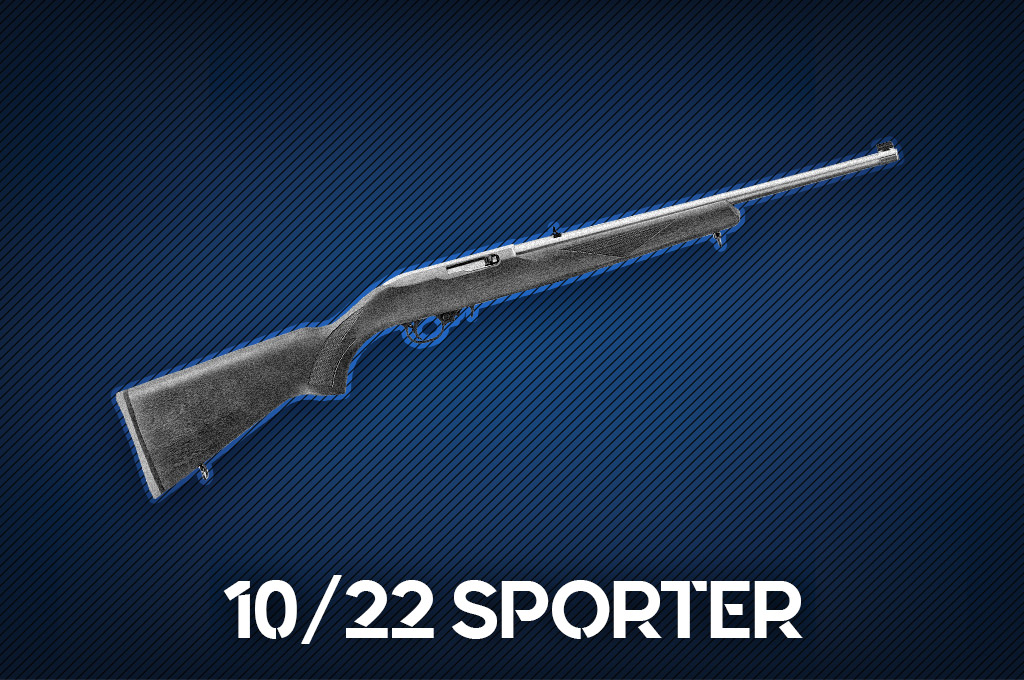
Ruger 10/22 Sporter features a standard 18.5″ barrel and is a legendary plinker.
The Ruger 10/22 Sporter model is a staple of the rimfire community. In production since the 1960’s this model comes with a standard 18.5″ barrel, with 20″ or 22″ barrel options available as a special order. The barrel is cold hammer-forged and locks in place with a two-screw V-block system. Modern versions feature both a Weaver-style and a tip-off scope mount option on the top of the receiver. The iconic stock is a checkered walnut with dual-stud sling swivels.
Known for its accuracy, this model features the legendary 10/22 smooth action design. It’s a solid all-around plinker, and the detachable 10-round rotary magazine will run just about any .22LR you put in it reliably. Recommended at gun store counters across the country for target shooting, and small game hunting, everyone needs a Sporter model in their gun safe.
Features of the Ruger 10/22 Takedown
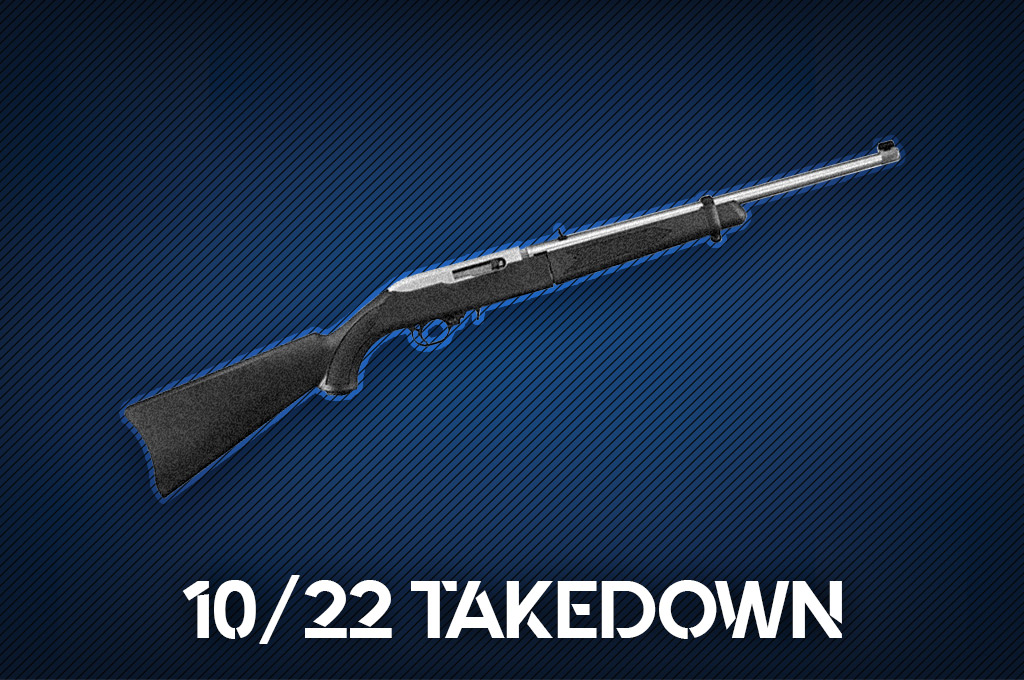
The Ruger 10/22 Takedown is a backpack-friendly model with a lever-twist action that allows for quick disassembly.
The Ruger 10/22 Takedown just about fits into your pocket – well, maybe a pocket in your backpack. The 10/22 Takedown does exactly what it says: it breaks down into two parts so that you can easily store them.
But just how easy is it to take down the Takedown? It’s as simple as releasing a lever and then twisting off the front half of the firearm. And it goes back together just as simply. You’ll pay a little more for this feature, but if you want an ultra-storable 22LR, then the Takedown model might be for you.
Note: They also have a “lite” takedown version that’s even lighter—about 4.5 lbs vs. about 5.3 lbs.
Features of the Ruger 10/22 Tactical
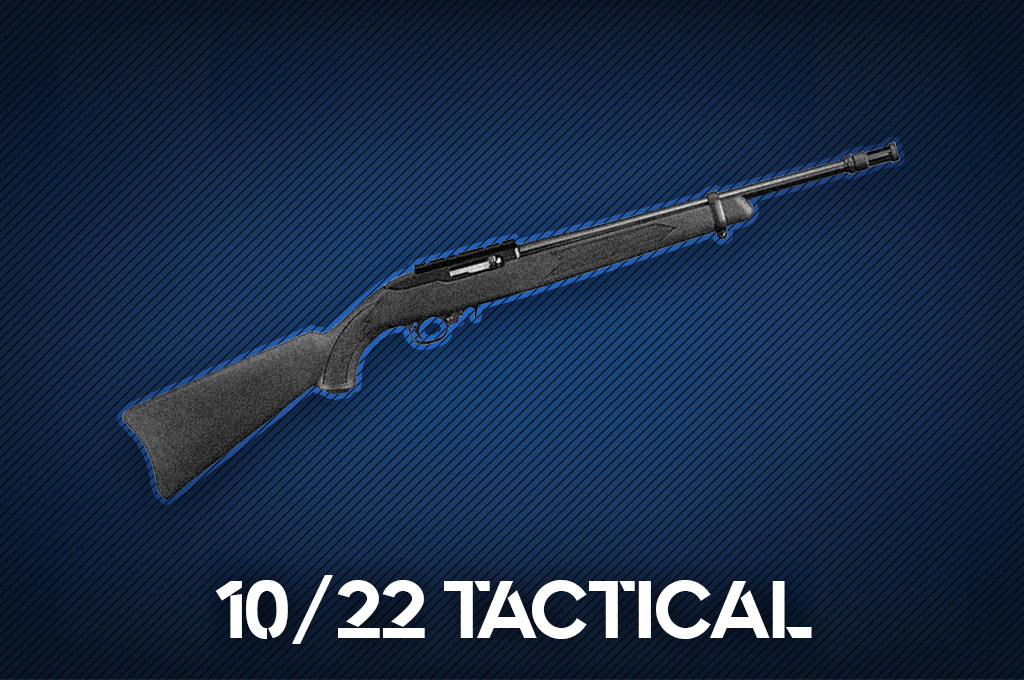
There’s not much the Ruger 10/22 Tactical model can’t do, with a wide variety of adaptable aftermarket accessories available.
The Ruger 10/22 Tactical is designed for those who enjoy features such as rails, folding stocks, and an extended magazine capacity. One feature that stands out as universally “different” is the shorter barrel, which measures 16.12 inches.
Otherwise, Ruger’s line of tactical 10/22 22 LRs offers various styles. Options include wood stocks, polymer stocks, telescoping stocks, Picatinny rails, slings, and upgraded sights.
While this isn’t true with all tactical 10/22s, most offer an extended magazine, giving you 15 to 25 rounds right out of the box.
Features of the Ruger 10/22 Competition
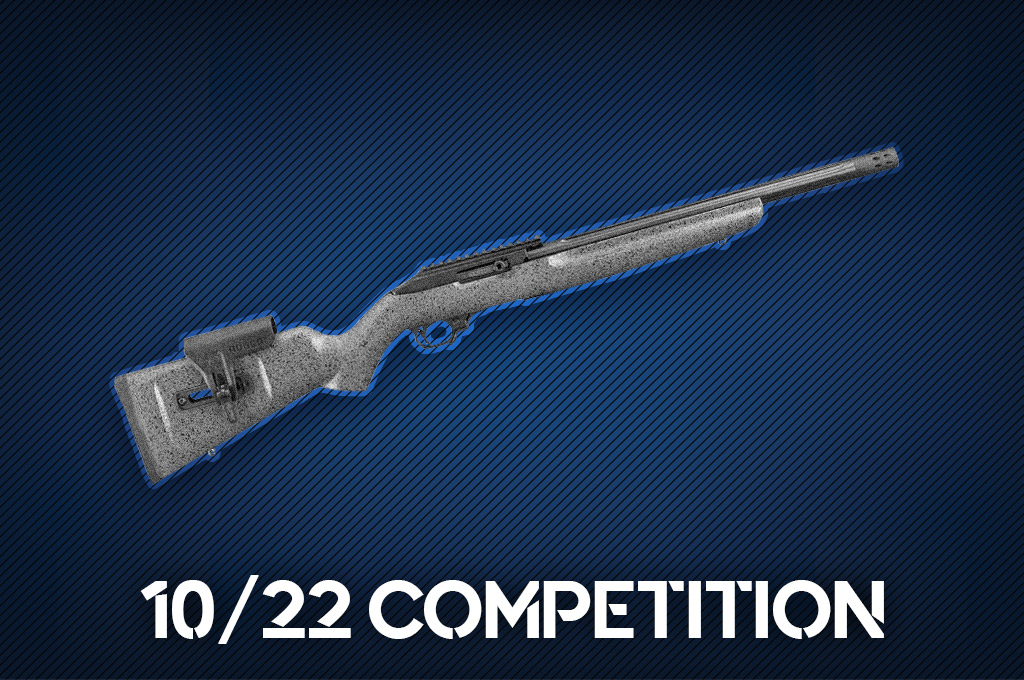
Ruger’s 10/22 Competition rifle offers competition-level performance and accuracy.
The Ruger 10/22 Competition rifle offers shooters a premium experience. Like many Ruger 10/22s, the Competition version comes in several packages. However, some common features include a fluted barrel, skeletonized stock, an adjustable cheek rest, and options for left-handed shooters.
Each competition model is fitted with an optics-ready 30 MOA Picatinny rail. The competition version of the Ruger 10/22 demonstrates the rifle’s historical evolution, proving that this design has the power to reach shooters of all types.
If you’re curious about pairing some high-end ammo with your high-class 10/22, check out our article on 22LR match-grade ammo.
Note: Remember that these are not the only three variations of the 10/22. Since you didn’t come here to read a novel, we didn’t go into detail on all of them, but here’s a quick list of the rest: the Sporter, the Target, the Collectors Series, and the Compact.
Common Modifications
The Ruger 10/22 is right up there with the Glock 19 and the AR-15 when it comes to modifications. As discussed in the last section, Ruger makes a ton of variations of this rifle; however, that never stopped gunsmiths worldwide from adding their own options.
You can buy the fancier models outright from Ruger or upgrade the standard models yourself. A few common modifications to the Ruger 10/22 include:
- New magazines: Many people choose to buy larger magazines. One of the 10/22’s “fun” aspects is the ability to “waste” a lot of “cheap” ammunition. Indeed, it’s easier on the budget to unload a lot of 22 LR than larger calibers.
- Picatinny rails: You can buy models with rails or add them relatively simply to the top of the firearm.
- Optics: The standard sights will do the job, but if you want more versatility, consider a red dot or a full scope.
- Stocks: There are many options if you’re looking for an upgraded stock. Some people want something bigger, while others might be interested in one of those nifty folding stocks.
This is only a taste of the possible modifications to the Ruger 10/22. One running joke is that you can build a whole Ruger 10/22 without ever buying a Ruger-made part.
Legend of the 10/22
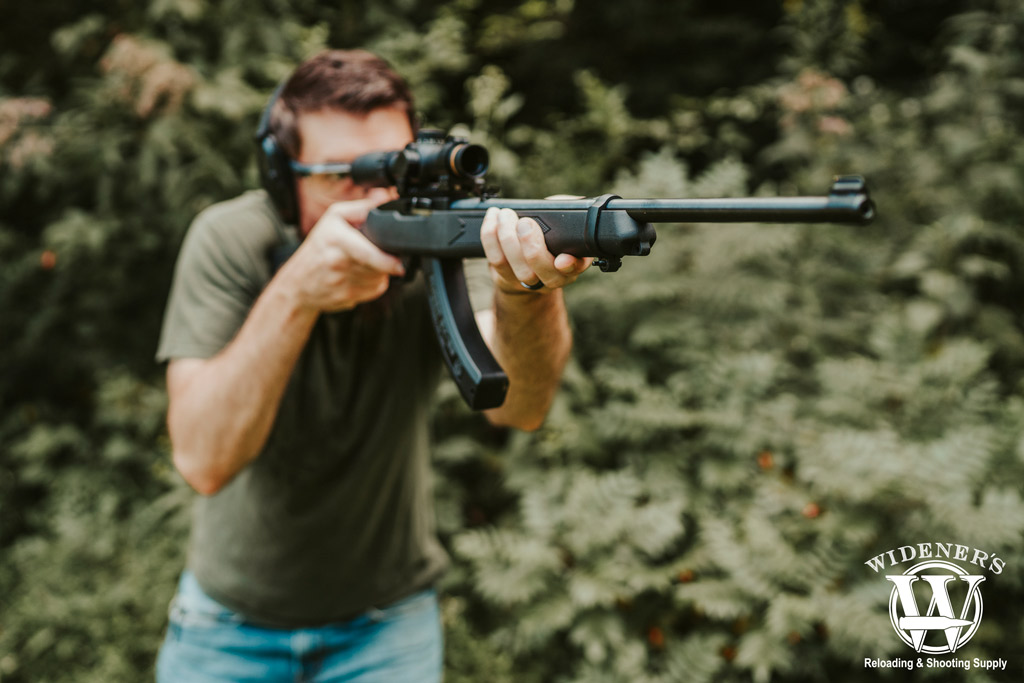
More than seventy-five years after it’s introduction, the Ruger 10/22 remains one of the most popular rimfire rifle options.
The history and evolution of the Ruger 10/22 is a perfect example of sound engineering that runs on the fuel of never-ending imagination. In 1964, Ruger didn’t introduce a fancy new round or even a completely new concept – they focused on reliability and a platform that would give the user whatever they needed.
The Ruger 10/22 evolved into more than just a “plinker” for training new shooters. Modern iterations of the firearm include tactical versions, competition models, and even the two-part “Takedown” for easy storage.
Hopefully, this article has brought you up to speed on your Ruger 10/22 history. If you’re one of the few firearm owners who doesn’t have one, take this as a sign: it might be time to get one.
What exactly is the effective range of the .22LR cartridge? Read our article about the effective range of the .22LR.


